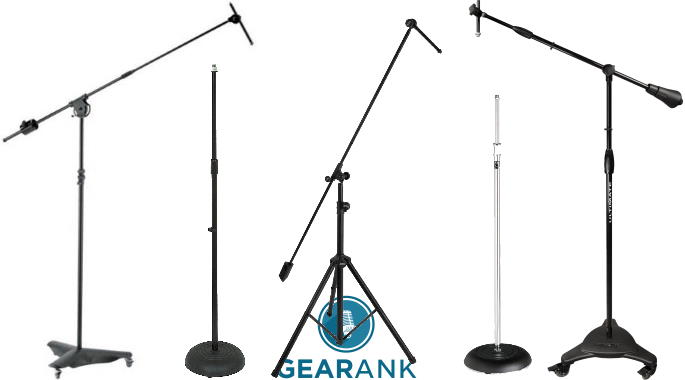
Disclosure
We recommend all products independently of 3rd parties including advertisers. We earn advertising fees from:
• • • • •

• • • • •
Amazon
As an Amazon Associate we earn from qualifying purchases.
• • • • •
Microphone Guides
Above all else in your studio, the one thing you shouldn’t cheap out on are Mic Stands. Faulty ones break down faster and in the event of failure, might damage your expensive equipment. Performances are also disrupted by microphone stands slipping down or falling over without much force and can be annoying to deal with as a performer.
A solid, well-built microphone stand can support a microphone as well as provide a stable platform to attach them to. If it cannot fulfill those two basic requirements, avoid it.
Getting the right one for your studio or stage will depend on what mics you plan to use it and how often it would be in the path of movement. For example, overhead mics need to be mounted to stable and tall mic stands to prevent tipping over while in contrast, smaller mic stands are best to mic up speaker cabs from the floor to save space.
There are 4 sections dedicated to different types of mic stands and price points.
For our budget option section, we opted to choose only boom mics since versatility and bang for buck is top priority at this point. The other sections are devoted to boom mic stands, straight mic stands, and stands that are more suitable for the studio. Our studio stand selections are more heavier duty products that can support larger microphones like condensers and tube mics. To fit into this category, we looked at microphone stands that have longer microphone boom arm length and other useful features for the studio like a counterweight for heavier microphones or casters for easy positioning.
The Best Mic Stand Options – 2024
| Gearank* | SRC* | Check Price | ||||||
|---|---|---|---|---|---|---|---|---|
| The Best Cheap Mic Stand - Boom | ||||||||
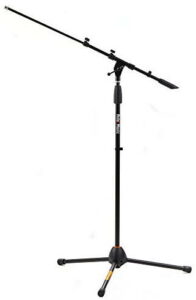 | Hola! Music HPS-101TB | 94 | 2350+ | |||||
| The Best Boom Mic Stand | ||||||||
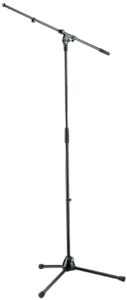 | K&M 210/2 (21020) | 96 | 2000+ | |||||
| The Best Straight Mic Stands | ||||||||
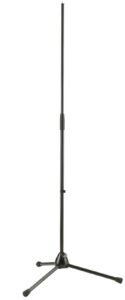 | K&M 201A/2 | 95 | 150+ | |||||
 | Atlas Sound MS25 | 96 | 100+ | |||||
| The Best Studio Mic Stands | ||||||||
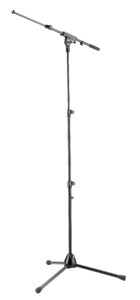 | K&M 252 | 95 | 325+ | |||||
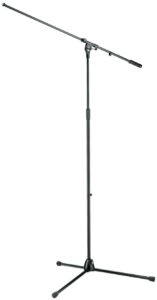 | K&M 21021 | 95 | 475+ | |||||
Author & Contributors
Raphael Pulgar
I've been an audio engineer for 20 years specializing in rock and metal recordings. I also play guitar and produce original music for my band and other content creators.
The Best Cheap Mic Stand - Boom
Here we have the highest rated boom stand with a street price of $50 or less - these can be used for playing live or recording. If your budget can stretch a bit further then I strongly recommend you take a look at the higher quality but more expensive boom stands in the other section below.
Hola! Music HPS-101TB
Cons
- Too light for heavier mics
Pros
- Great build quality for the price
- Solid joints and boom clamp
- Folds up neatly
Hola! Music is a family-owned music equipment company that focuses on making value-oriented products. The HPS-101TB is a telescoping boom stand with multiple points of adjustment and locking to provide better angles of use when miking up instruments, amplifiers, or vocals.
The stand's build quality doesn't reflect its price - in a good way. The locking mechanism, leg joints and materials are what you would see on stands costing a bit more. It also folds up neatly for easy storage.
Despite the great build quality, this mic stand might not be ideal for larger or heavier microphones. Adding more mass to the stand would inevitably raise the price up a bit.
If you're looking for multiple microphones stands, and you want something affordable, but with good quality, the Hola! Music HPS-101TB is a great buy.
Features
- Telescopic boom
- Large Ergonomic Height Clutch
- 3 angle and length clutches
- Locking leg housing
- Height Adjustment from 40" - 63"
- Boom Length Adjustment: 4" - 27"
- Weight: 5.35 lbs
| Website | Source | *Rating Value |
| Youtube | Evolving Agilist | 84/100 |
The Best Boom Mic Stand
These high-quality microphone stands with booms can be used for both live performances and recordings. Here we present the highest rated options available. For more affordable options see our recommendations for cheap boom stands above.
K&M 210/2 (21020) Tripod w/ Boom
Cons
- Needs counterweight for heavier mics
Pros
- Great quality tubing and clamps
- Stable tripod base
- Tall enough for drum overheads
The 210/2 is K&M's longest-running tripod boom stand and has been in production for over 30 years. Compared to the K&M 210/9, the boom arm clamp is a sturdier T-bar design.
It features industry-standard height and boom arm adjustment and a solid tripod base with foldable legs.
It's simple but durable thanks to the higher quality tubing and clamps that K&M uses. While it's not designed for heavier mics, the tripod base is solid enough to support them by attaching a counterweight. The clamp prevents droop for moderately weighted mics as well. As far as height goes, it can reach well above a drum kit for standard overhead mic positions although extremely tall positions might be out of reach.
For touring on the road or setting up at the studio, the 210/2 tripod mic stand is a reliable pick for everyday use if you need more mass for stability.
Features
- Single piece boom
- Steel tubing
- Zinc die-cast base
- Boom length: 31.5"
- Height Adjustment from 35.4" to 63.2"
- Weight: 6.8 lbs.
The Best Straight Mic Stands
These are high-quality, straight stands used for vocals in both live and studio settings. Please note that straight mics stands are generally only suited to vocalists who will not be playing an instrument as they can only be adjusted vertically.
K&M 201A/2
Cons
- None for this style of stand
Pros
- Consistent and durable
- Tall extension height
- Solid Tripod base makes any height stable
The K&M 201A/2 is sturdy but lightweight, with a range of 35.5" to 63.2" in height. That's more than adequate for even the tallest of performers.
A wide tripod base helps in stability even at maximum height. The non-scratching clutch aids in long term durability.
As with all K&M stands, the 201A/2 uses the same durable tubing and clamps as many in their line. This consistency is what makes K&M stands studio staples.
One important thing to note though is to properly torque or secure the clamps to prevent premature wear. Even a solidly built stand like the 201A/2 can fail with improper usage.
If you're looking for a tall, no-nonsense microphone stand with a great track record for durability, the K&M 201A/2 is the stand to get.
Features
- Lightweight
- Stable tripod and non-scratching clutch
- Height Adjustment from 35.4" to 63.2""
- Weight: 5.29 lbs.
Atlas Sound MS25 Heavy Duty Solid Triangular Base with Air Suspension
Cons
- Might prove difficult to travel with because of the weight
Pros
- Solid and heavy base ensures stability even with boom arm attachments
- Air suspension protects mics from sudden post drops
- High quality parts and tubing
The Atlas Sound MS25 is a heavy-duty stand that comes with a chrome tube finish. Its triangular cast base is designed with sculptured sides, ebony finish, and chrome covering and is built for maximum balance and stability.
It also features an integrated air suspension system that is designed for protecting sensitive microphones from sudden vertical adjustment drops.
Aside from a very weighty base to aid in stability, it's also heavy enough to be used with a boom microphone arm attachment with moderately long extensions.
This pro can also be a con as the weight might not be the best for those that want portability. Carrying around several of them can add up to a hefty weight especially when travelling with a vehicle with lots of other equipment.
This is ideal for mostly home recording or in-house venues where it can be easily stored. It's stable and has an added protective feature in its air suspension. Get it if you have expensive or sensitive mics that you cannot be impacted by a dropping post.
Features
- Available in mirrored chrome or non-reflective ebony epoxy
- Wear-resistant 3-Piece Clutch for secured height Adjustment
- Height Adjustment from 38" - 67"
- Weight: 23 lbs
The Best Microphone Stands for Studio
These studio mic stands are ideal for use with condenser microphones and other heavy studio mics. They also offer extended height and boom adjustment for additional positioning options.
K&M 252
Cons
- None
Pros
- 3-piece telescoping design reaches tall heights
- Folds up to a compact size for storage
- Stable platform for high mounted overhead mics
- Excellent build quality
Featuring a 3-piece telescoping design, the K&M 252 is a tall, tripod mic stand designed for higher mic elevation and placement.
Not all tall studio stands are made the same. The height adjustment is in three segments, making storage easier by folding it up. This compact storage size coupled with a weighty, robust build quality is a great combination for studios with limited storage space.
This K M microphone stand is still quite heavy compared to other stands so unless you plan to travel with it, it shouldn't be a problem in the studio or a venue.
K&M focuses on great build quality and long-term durability. The 252 is no exception. With its compact folding size to contrast with its tall elevation, it's a great pick for the stage or studio.
Features
- Standard Mic Boom
- 3-piece telescoping design
- T-bar locking screw
- Durable metal construction
- Height Adjustment from 24.409 to 57.874"
- Boom Length Adjustment: 19.291" to 31.299"
- Weight: 6.25 lbs.
K&M 21021
Cons
- A little excessive for small studio spaces with lower ceilings
Pros
- Position mics high with confidence thanks to its solid base
- Great for orchestras, choirs and big drum rooms
- Folds small including the legs
The K&M 21021 "Extra Tall" is perfect for large venues with wide floor space and a lot of verticality. It is a tripod microphone stand designed for studios and drummers that want to capture more of the room ambience in their overheads, the 21021 allows up to 79.5" of elevation.
Its long tripod base can fold for compact storage.
Having a tall mounting stand like the 21021 is great for recording large choirs and orchestras. Having enough height means that more of the room is captured especially when the hall sounds very nice. The stand is stable enough to position microphones without fear of tipping over by itself.
For the price however, it falls into a niche purpose. Unless you are in need of a stand that reaches this high, you're better off saving some money with a more general use stand.
That being said, it's imperative to exercise utmost caution when positioning mics that high. The 21021 gives a little peace of mind in that regard.
The K&M is a solid performer for overheads that need to be flown high above the drum kit for that huge room sound. It's also great for capturing incredible rooms and orchestras at heights few mic stands could ever reach. If you need a tall and secure microphone stand for these purposes, the K&M 21021 is it.
Features
- Designed for studios and drummers
- Two section telescopic pole with noiseless clutch
- T-bar locking screw
- Durable metal pole construction
- Height Adjustment from 43.3" to 79.5"
- Boom Length Adjustment: 42.1" Fixed
- Weight: 12.5 lbs..
Things To Consider When Buying Microphone Stands
- When it comes to live performance you're usually going to be setting up and tearing down your stands much more frequently than you would in a studio setting so getting robust solid stands is very important. Another important, yet sometimes overlooked factor, is how much space they take up when packed away. Having a stand that can fold small is a great plus, especially if you're carrying multiple to a venue setup. Reliability is a big deal, especially if you're using expensive mics for good audio quality.
- Boom designs offer more versatility with mic positioning and adjustment at the expense of portability and stability. They can be used for most situations except for vocalists that prefer the best live vocal mics while performing. For singers, straight stands are generally preferable unless they also play an instrument at the same time. Straight stands are the most common type, they handle the weight of the microphone better, but has limited positioning.
- Tripod stands are versatile and can fold up to take much less space than solid base or round base stands. Tripods are required for Guitar Micing. Oftentimes the only time you would use solid base stands live is where a boom isn't necessary such as with singers who don't play an instrument. For musicians that sing while playing an instrument a tripod stand with a boom is almost always necessary so that the stand can be placed in such a way that it won't get in the way of playing the instrument.
- You can effectively use just about any type of microphone stand for recording so long as it allows you to position the microphone exactly where you need it to best capture the source you are recording. Some stands help facilitate this by providing booms with a counterweight allowing the mic to be positioned a long way from the base - this can be particularly helpful positioning overhead mics and with miking drum kits. Some contain shock mount absorbers to minimize floor vibrations that might reach the microphone. Some studio mic stands also come with casters/wheels so you can move them around the studio easily - this can be helpful when you have a heavy microphone attached and you don't want to disturb the stand setup. There are also specialized microphone stands dedicated to particular sound sources like short ones for kick drums.
- The clutch is the mechanism that keeps the mic stand's vertical adjustment in place. For boom mics, adjustments are locked using a screw clamp. When you put a microphone into a position, it needs to be fastened securely. Some of the cheaper stands may cause the mic to sag or drop in position which can ruin a great take when recording or require someone to run up on stage and make adjustments during a performance. This doesn't usually happen when they're brand new but it may occur after extended use. You can avoid this problem by purchasing high-quality stands with C clamp.
- The overall weight of the stand, especially around the base, determines how stable it is. Higher stability then is a tradeoff with portability since heavier stands are more tedious to travel with. When using boom stands with heavy condenser mics and other attachments you'll find basic boom stands are fine so long as you don't extend the boom too far beyond the feet otherwise the center of gravity will be outside the base and it will tip over. If you want more control over the placement and extension of the boom then you'll need one that provides a counterweight - an adjustable counterweight can be particularly useful when miking large drum/percussion setups. You will find these in the Studio Mic Stand section above. Another important factor in having good balance is having a good non-slip rubber feet. Note that if you're using a pop filter, you'll have to factor in its weight when balancing a boom mic stand. Wireless Mics with built-in transmitters can be too heavy for some cheap boom stands.
What is the Best Type of Mic Stand For Performing Live?
Boom vs Straight
Tripod vs Solid Base
What Makes the Best Studio Mic Stand?
Clutch & Clamp Strength
Balance & Weight
Best Mic Stand Selection Methodology
The first edition was published in 2016.
First, we narrowed down our focus on mic stands for live performance, so we filtered out home studio desk stands for mics. Note that a desktop microphone stand is essential for home setups, but they are not the focus of this guide. We then looked at all mic stands from major online retailers in the USA and came up with a shortlist of 64 models. e then collected ratings and feedback from customer reviews and forum discussions and fed that data into the Gearank Algorithm to produce the Gearank rating scores out of 100 for each stand - over 50,500 sources were used for this process. Finally, we recommended the highest-rated mic stands in each of the 4 categories above. For more information about our methods see How Gearank Works.
About the Author and Contributors
Here are the key people and sources involved in this guide's production - click on linked names for information about their music industry backgrounds.
Lead Author & Researcher
Raphael Pulgar
I've been an audio engineer for 20 years specializing in rock and metal recordings. I also play guitar and produce original music for my band and other content creators.
Growing up in the punk scene, bad mic stands were always a pet peeve of mine. As a performer, nothing annoyed me more than a mic stand giving out and ending up dropping the mic to the floor. A good mic stand holds secure even during the most energetic performances. In the studio, I always felt more confident with higher quality mic stands. They enable me to position things higher or closer without worrying that they might tip over or that the drummer might brush up against them going to the kit and accidentally reposition them. It's these things that keep my mind off of worries when I use good ones. So far K&M stands have been a favorite of mine.
Contributors
Jason Horton: Editing and Illustrating.
Media
Main/Top Image: Created by Gearank.com using photographs of the K&M 21430, Musician's Gear Die-Cast Solid Round Base, On-Stage SB9600, Atlas Sound MS-10C and Ultimate Support MC-125 stands.
The individual product images were sourced from their respective manufacturers' websites, promotional materials or supporting documentation.

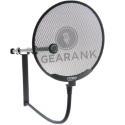
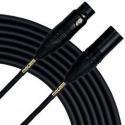
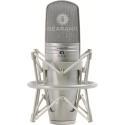
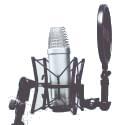
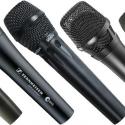
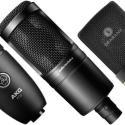
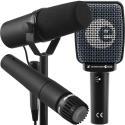
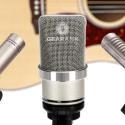
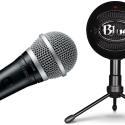
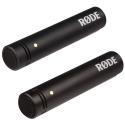
These stands came off our recommended list when we published the 2022.11 Edition:
Publication of our August 2021 Edition resulted in the following stands coming off the recommended list above:
As a result of our September 2020 update the following mic stands came off our recommended list above, but you can still see our analysis of them:
The following stand was removed from the recommended list above due to a price increase but you can still read about it: On-Stage MS9701TB+.
What boom mic stand does Don Henley use on stage with the Eagles?
i dunno
Great article of stands choice.